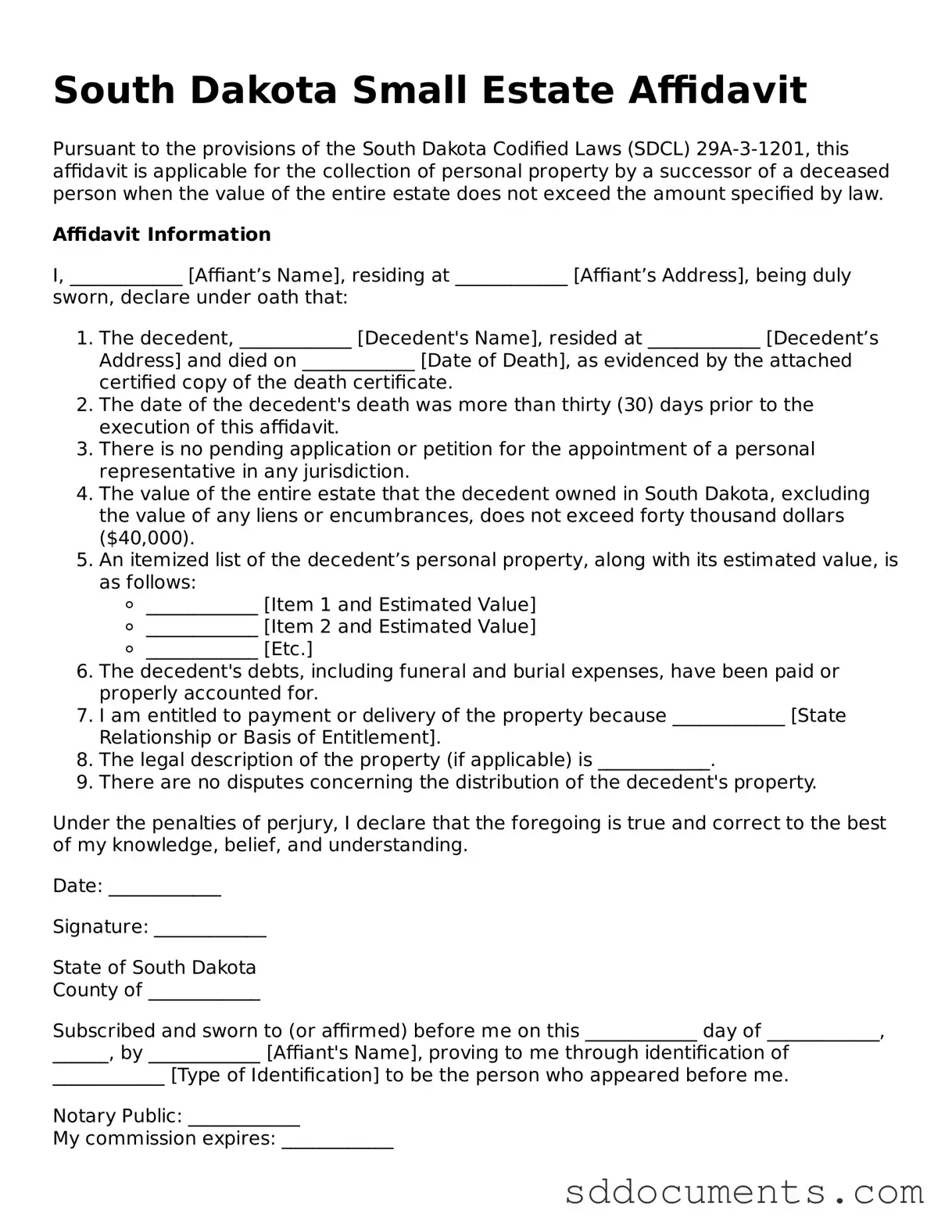Guidelines on Utilizing South Dakota Small Estate Affidavit
Once you have gathered the necessary information and documentation, you can proceed to fill out the South Dakota Small Estate Affidavit form. This form allows you to claim assets without going through the full probate process, provided certain conditions are met. Follow these steps carefully to ensure that you complete the form correctly.
- Begin by downloading the South Dakota Small Estate Affidavit form from the appropriate state website or obtaining a physical copy from the local courthouse.
- At the top of the form, fill in the decedent's name, date of death, and last known address.
- Provide your name and address as the affiant (the person making the affidavit).
- Include the relationship to the decedent, such as spouse, child, or other relative.
- List the names and addresses of all heirs or beneficiaries entitled to the estate.
- Detail the assets of the estate, including bank accounts, real estate, and personal property. Be specific and include approximate values.
- Indicate whether there are any outstanding debts or claims against the estate.
- Sign and date the affidavit in the designated area, affirming the truthfulness of the information provided.
- Have the affidavit notarized to ensure its validity.
- Make copies of the completed affidavit for your records and for any heirs or beneficiaries.
After completing the form, you will need to file it with the appropriate court, along with any necessary supporting documents. This will initiate the process of transferring the assets to the heirs without the need for a lengthy probate procedure.
